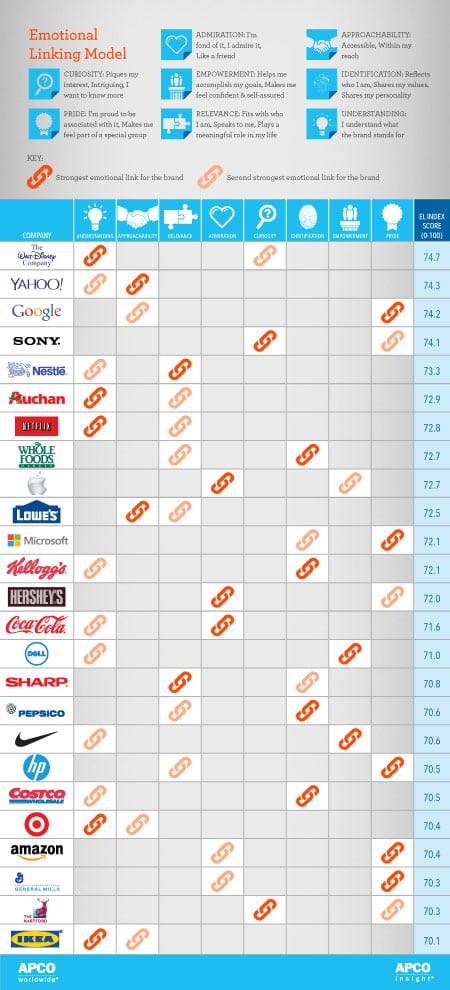(This is Part 2 of "Why Emotion Matters in Brand Positioning." Click here to read Part 1.)
We’ve discussed how to build brand-consumer relationships, and why the Emotional Linking Model formed by the key emotions of relevance, curiosity, approachability, understanding, admiration, pride, empowerment, and identification are the building blocks of strong and lasting bonds.

There’s another reason that emotional connections are critical in brand communications today: time. More precisely, no time.
If you take a minute and look at the online home pages and “about us” descriptions of any number of PR, advertising or strategic communications firms, you are certain to find language about how that firm can “cut through the clutter” or “break through with ideas that get heard.” Horrible clichés, right? I agree. But they still populate the marketing materials of creative businesses in recognition of the fact that this challenge is supremely important, and very, very difficult to do.
What’s clutter and what’s content is in the eye of the consumer, but it’s clear the volume of messages we all encounter has grown. Just how much message clutter has grown is a matter of debate, with market research firms reporting everything from a few thousand to more than 10,000 impressions landing daily on innocent consumers. Now – the definition of impressions may include everything from actually reading or watching an ad to glancing across a grocery store aisle full of hundreds of products, so I take most of these estimates with a large grain of salt. But let’s assume for the sake of argument that most consumers are exposed to a couple hundred product or brand messages a day.
Then let’s consider the source. Advertising, media and marketing is everywhere. No longer confined to the relatively discrete channels of digital, social media, television, print, radio, out-of-home and the like, but projected on buildings, stenciled on the shell of supermarket eggs, in the music on your child’s school bus, the side of airline airsickness bags, in scent-spritzing bus shelter panels, in movie and TV product placement, and as a tattoo on the forehead of the subway rider sitting across from you.
Let’s not forget that all of this clutter fills the spaces in between the larger pieces of communications furniture in our lives – the husband or wife on the phone, emails from work, the kids yelling, dogs barking, and every other message source trying to communicate something to you right NOW.
How can consumers navigate a world of message chaos, divided attention, and constant choices with so little time? Many of the consumer choices are, to be fair, between brands that are in many ways the same. Is a situation like that a choice? Or maybe just a reflex?
Whether you consider your quick click and purchase of same price/style Brand X light bulbs over Brand Y to be a true choice, or something less deliberate and more random, many leading neuroscientists would tell you that emotion was involved. USC Professor and Ted-talker Antonio Damasio found that individuals with damage in the area of the brain where emotions are generated are not able to make even basic decisions like what to eat or where to live. These patients could describe the rational mechanics of decision-making in an abstract way, but they could not make the decision itself, much less take action.
Emotions help us choose. More than that, emotions help us make our way through a complex environment where lengthy analysis is not possible. They are our own personal set of shortcuts and hacks in life. Even with the luxury of time and a less cluttered environment, trust in personal feelings and core emotions is what anyone who has heard they should “follow their gut” was being asked to do. Emotions not only help us create shortcuts, they help us remember where they are. When we can’t remember a fact, we can often remember how we felt, and memory helps guide us to our destination of choice.
Which companies do this best? Using the Emotional Linking Model, APCO Insight found the following brands demonstrate superior emotional connectivity with consumers – for particular reasons. It should come as no surprise that the best storytellers tend to rise to the top. Story is all about emotion, and strong brand storytelling wins - every time.
(Click here to read Part 1.)
Marilyn Fancher is Chief Creative Officer at APCO Worldwide. Follow her: @mjfancher. Follow APCO Worldwide: @apcoworldwide.

